Tangerine unshiu
The plant with this name - Citrus reticulata Unshiu - is often described as a separate variety, or several closely related varieties of mandarins. But it also happens vice versa, it is considered as an independent species. In fact, this is an extensive pomological group, represented by many varieties, sometimes significantly differing both in appearance and in their biological nature.
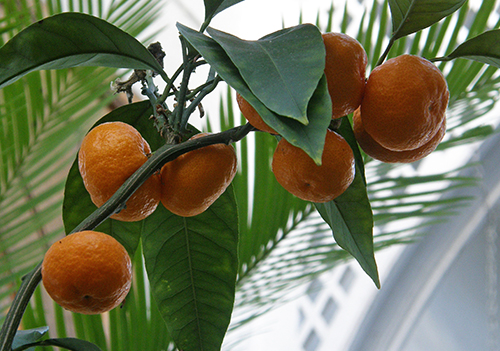
To understand the peculiarities of such a situation, it should be said that the Mandarin species from the genus Citrus generally still does not have an established taxonomic structure. Within the species, new hybrids are easily formed, the variety of shapes that can impress! In Southeast Asia, especially in Japan and China, breeding work has been carried out for centuries, as a result of which hundreds of clones and varieties have been obtained.
Group structure
This is undoubtedly the largest group within the Citrus reticulata species. In the literature, it is often described under the name "Sattsuma" (Satsuma), or even simply - "Japanese tangerines." Within it, in turn, five subgroups are described, differing in such features as maturation, geography of origin, and historical areas of distribution.
Wase Group... This includes many varieties, the main feature of which is fast, early ripening, as well as relatively weak winter hardiness. Wase plants are generally the most distinct from the rest of the Unshiu. A characteristic and popular variety in the group - Forged Washo.
Zairai... This word can be translated as "local", "indigenous", "old". The name itself indicates that these varieties have arisen a long time ago, their origin has been lost in time. If we are talking about "Japanese tangerines", then Dzairai most of all correspond to this name. We emphasize that due to early maturity, some of the Zairai may be related to Wase. This is the popular Miyagawa variety.
Owari mandarins... Named for the provinces on the island of Honshu where they come from. Older varieties of Owari can also be referred to as Zairai. Due to their high fertility, these trees are among the leaders in industrial citrus growing in Japan.
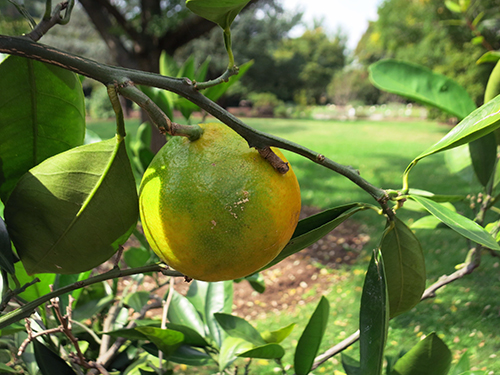
Ikeda group... Small in number, almost disappearing, originally from the city of the same name in Osaka Prefecture. In the form of small industrial plantations, it is found on the islands of Honshu and Shikoku.
Ikiriki... Like the previous ones, they got their name from the settlement. Also, they are rapidly losing popularity, there are plantings near Nagasaki and in Saga prefecture.
Description of Unshiu Citrus
Considering all of the above, a logical question can be asked: how, then, to describe this mandarin, if its representatives have such noticeable differences? After all, there are numerous Russian-language descriptions?
A bit of history
And here you have to make a small historical excursion. The fact is that all Unshiu have a fairly high winter hardiness. Cold resistance is generally characteristic of all tangerines when compared with other popular citrus fruits. Back in the Russian Empire, tangerines were grown in Azerbaijan and the Caucasus, especially in Abkhazia and Adjara. These are the northernmost regions in the world where citrus fruits are able to grow in open ground, not just as individual tub specimens, but in industrial plantings.
In Soviet times, already in the 30s, serious work was carried out in Georgia to introduce the tangerine culture. The basis was taken, first of all, of plants from the Vasho group, as the earliest ripening. At the same time, the old Dzairai varieties were used as the most cold-resistant. A lot of varieties appeared, among them Sochi, Pioner, Michurinets Sukhumsky, Anaseuli-Saadreo and others. Fortunately, the tangerine culture allows you to get fruiting seedlings after 4 - 5 years, which greatly facilitated the work of breeders.

As a result, what is now described as the Unshiu mandarin is rather a collective image of several low-growing varieties that have become widespread as a room or tub crop.This is especially noticeable, for example, on the forums of citrus growers, where often the description of Unshiu by one participant meets the objections of others: "But my tree looks different!" As an option, there are disputes about the timing of ripening, about the shape of the fruits, the presence of seeds in them
Description of the crown
At home, this is a compact tree no more than one and a half meters high, usually even lower. The branches are thin, slightly drooping, devoid of thorns. The bark is greenish, and only on the trunk and old branches it acquires a brown tint.
The leaves are deep-dark, leathery, dense, with a prominent central vein clearly visible on them. If the leaf is rubbed in the palm of your hand, a characteristic herbaceous-bitter odor appears. The leaf plate has an elongated oval shape, tapering towards the end. Petioles are narrow, very short.
The tree is relatively unpretentious, resistant to arid air and lack of lighting. It is these qualities that made it popular among amateur citrus growers. In addition, as we have already noted, it is capable of withstanding low temperatures. In Abkhazia, mature bushes do not freeze even at minus 12 ° C, provided that such frost does not last long.
The crown is easily formed by cutting, it is convenient to give it a spherical shape. Usually there are two increments per year: the main one is spring, and the second, weaker one, at the end of summer.

The rooting rate of cuttings is extremely low, usually the trees are propagated by grafting, including trifoliate.
Attention! Mandarins generally need a cool wintering, and grafted onto tripolyate in particular. If you do not have a cold loggia, you should use other citruses as a rootstock, for example, orange or lemon seedlings.
Flowering features
Mass flowering occurs in the last third of spring, although the timing is highly dependent on the conditions of detention. There may be a second wave at the end of summer, but it produces few flowers, moreover, no fruits are tied on them. The flowers are small, but very fragrant (many call their smell sweetish), five-petal. They sit on last year's small twigs, usually collected in inflorescences of 4 - 6 pieces, there are also single ones.
The flowers are predominantly self-pollinated, resulting in seedless fruits. An important feature is that flowering can already appear on two-year-old bushes. Full fruiting occurs at the 4th or 5th years of life.
Fruit characteristics
Fruits become ripe starting in November. They are small, about 70 grams, flattened, light orange in color. It is the pronounced flatness that distinguishes the Unshiu fruits from the harvest of other varieties.
The shiny peel is easily separated from the pulp, and when dried it is used in cooking and folk medicine. The pulp is also orange; as already mentioned, it is usually devoid of seeds and consists of separate, easily divided lobules.
The fruit taste is great! They differ in sweetness, although they are inferior in this to new hybrids, for example, tangelo. The transportability of these fruits is also high. No wonder Unshiu is considered an important industrial crop!
Conclusion
Any variety from this group can become an excellent indoor exotic. Tangerines are unpretentious, easily tolerate the conditions of an apartment, do not require a separate place for themselves. At the same time, they are able to bear fruit quickly enough, even if they are looked after by a not very experienced person. The main condition for fruit formation is the presence of several cool winter months.
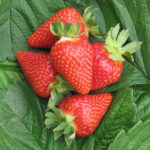
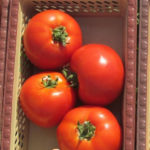
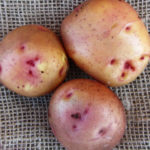
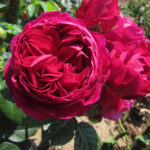
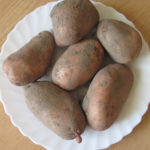
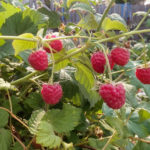



Tangerine Unshiu - a whole adult bush, about 70 cm tall, acquired in the botanical garden. He was more adapted to indoor conditions than his Dutch counterparts, he did not even get sick, he did not shed leaves.
Blooms profusely, several times a year, very aromatic. Numerous fruits are tied, the plant itself regulates their number, discarding unnecessary ovaries. The tangerines are very fragrant, the skin is thin, there was not enough sweetness on the east window, there was sourness. Slightly smaller than those sold in Abkhazian stores.
By the way, cuttings are not entirely bad - out of 10 pieces. took root without problems 3 - 4.
Both during flowering and at the time of fruiting, the tree looks quite elegant and decorative, despite the "bald" crown. For lovers of citrus fruits in the house, I highly recommend getting this tree.